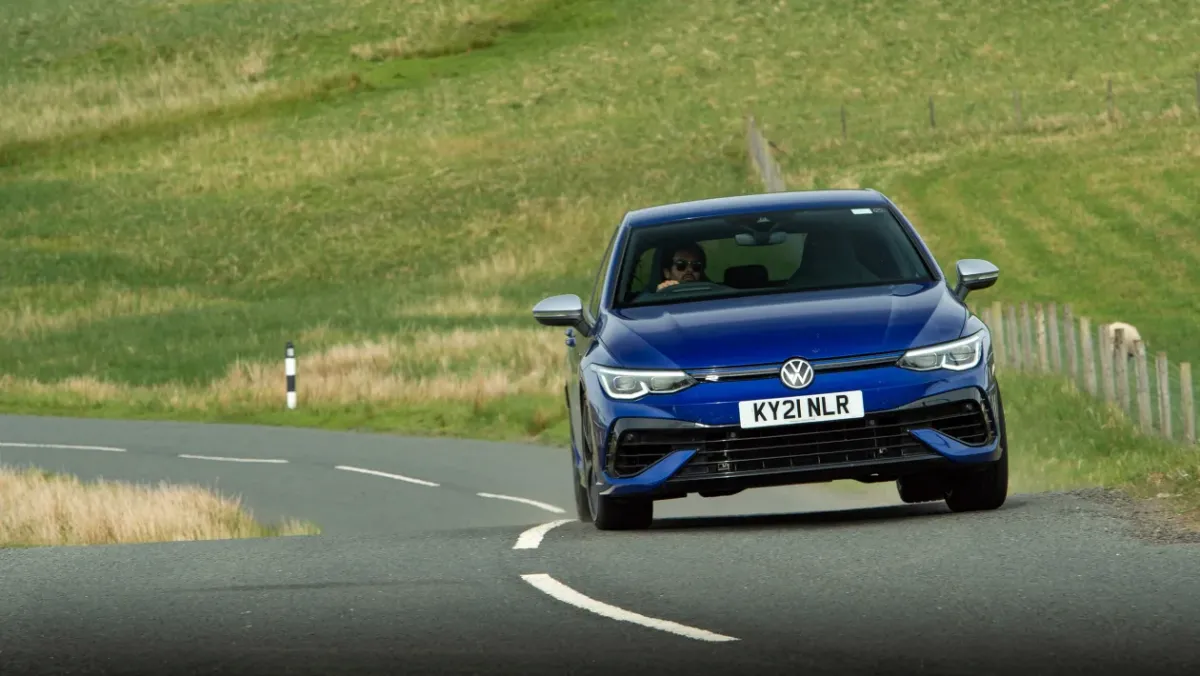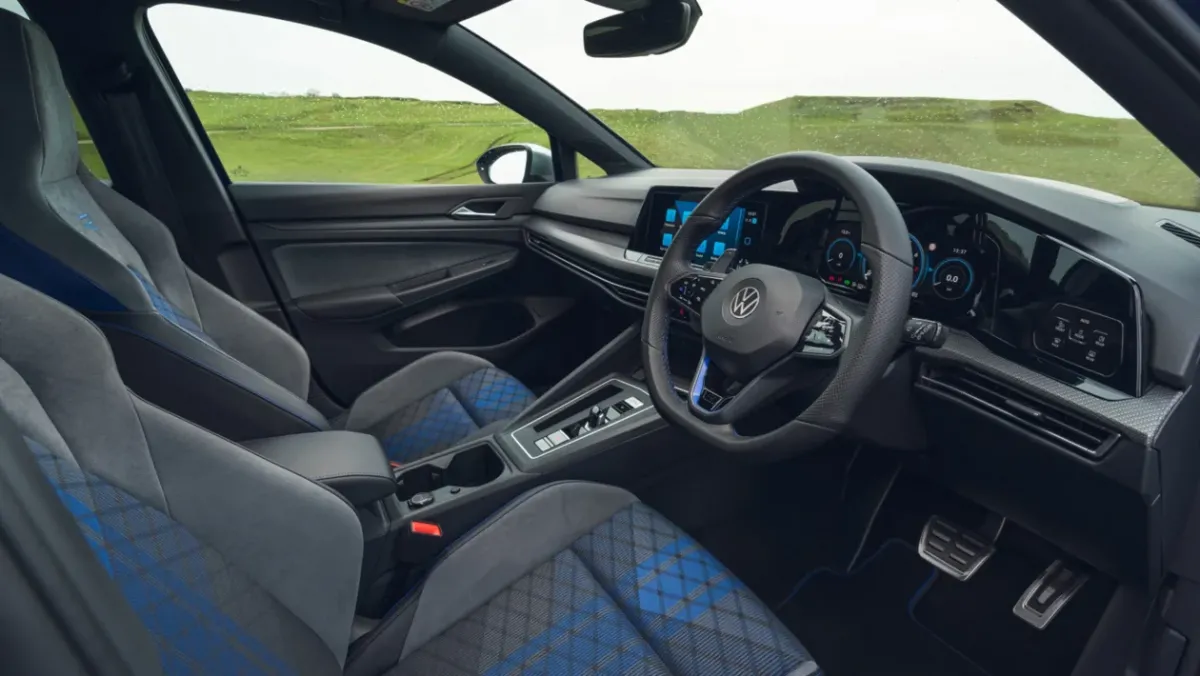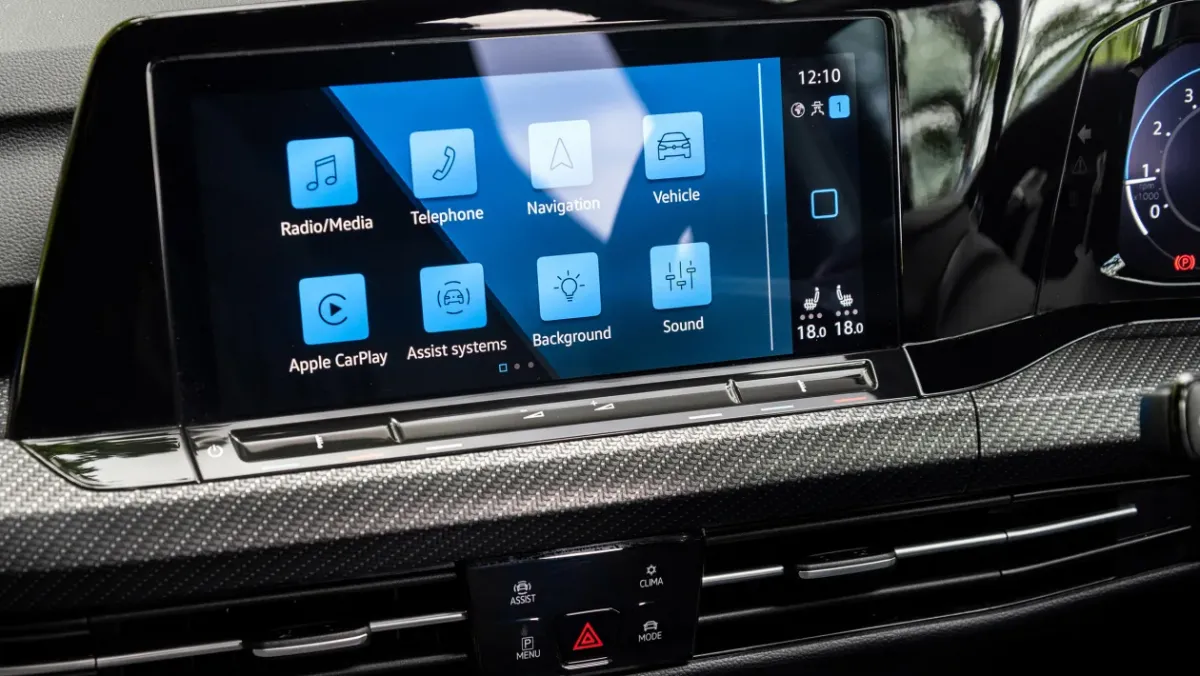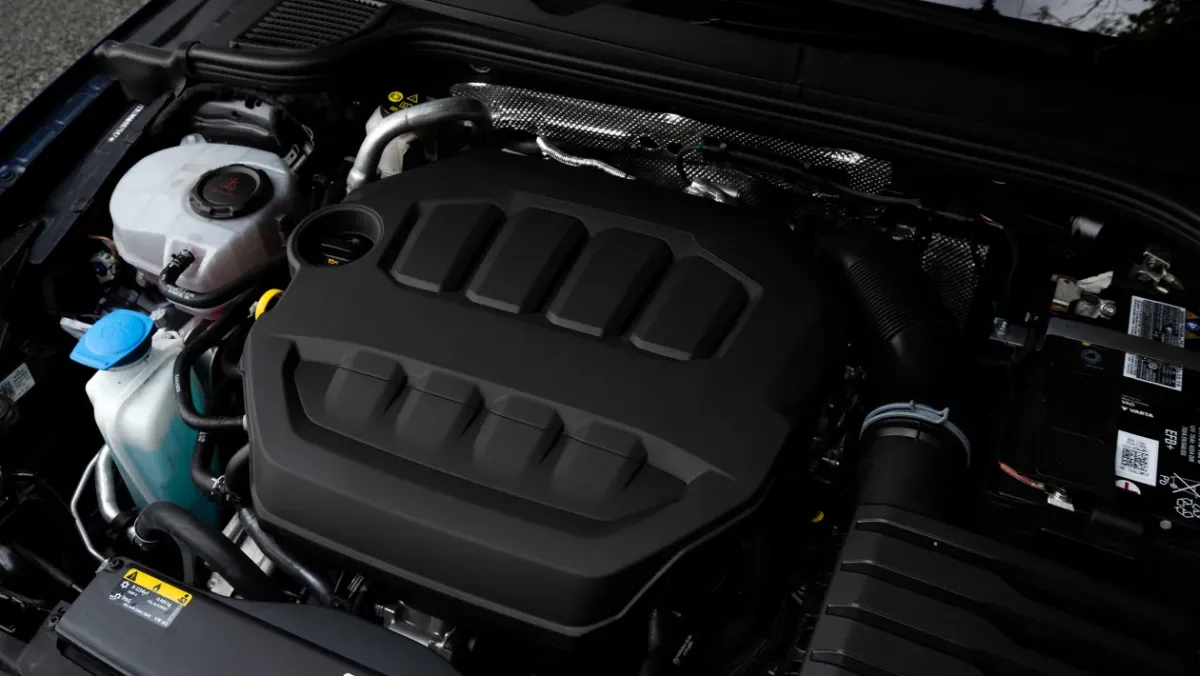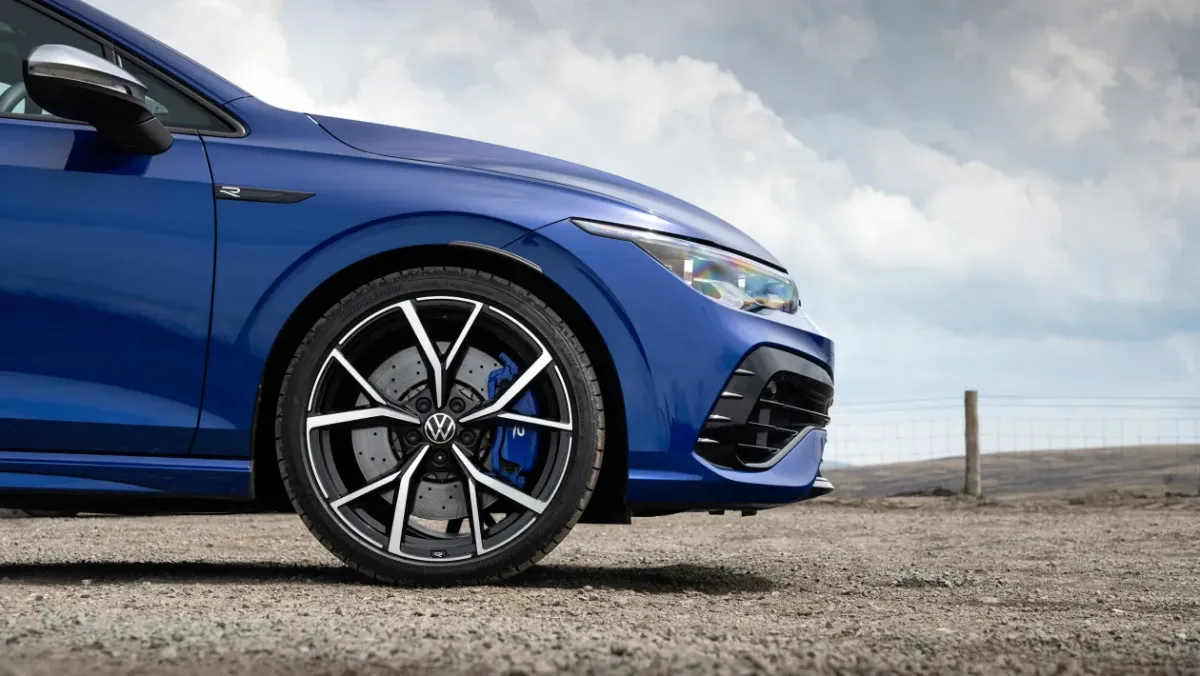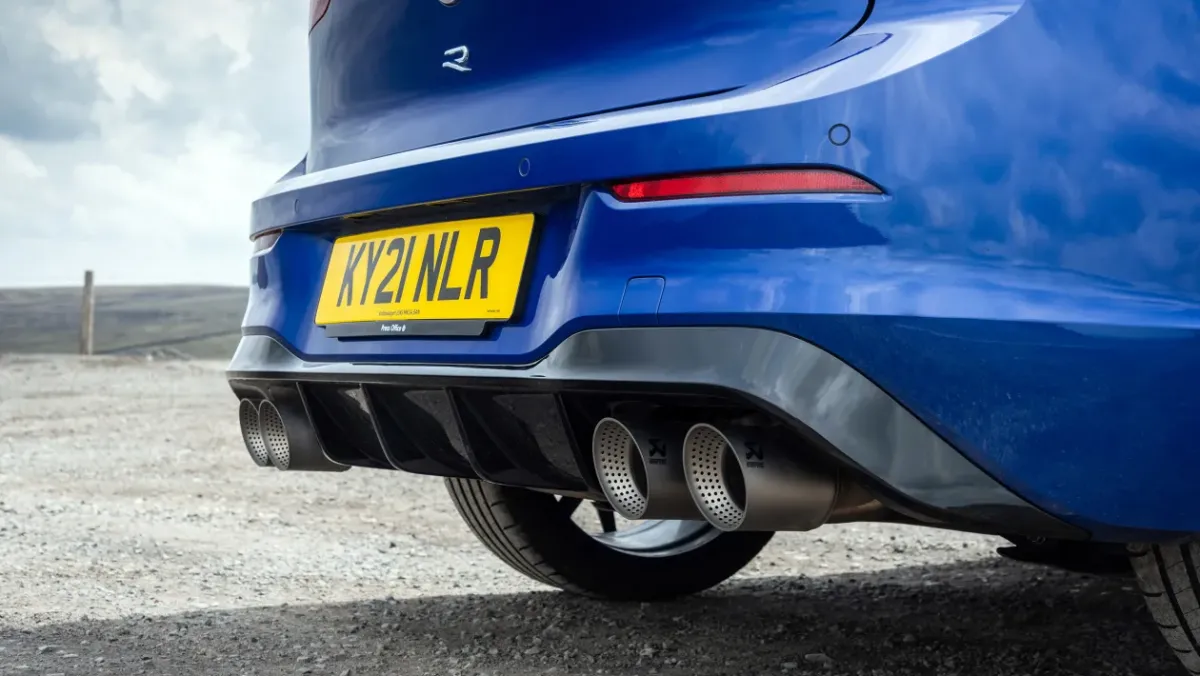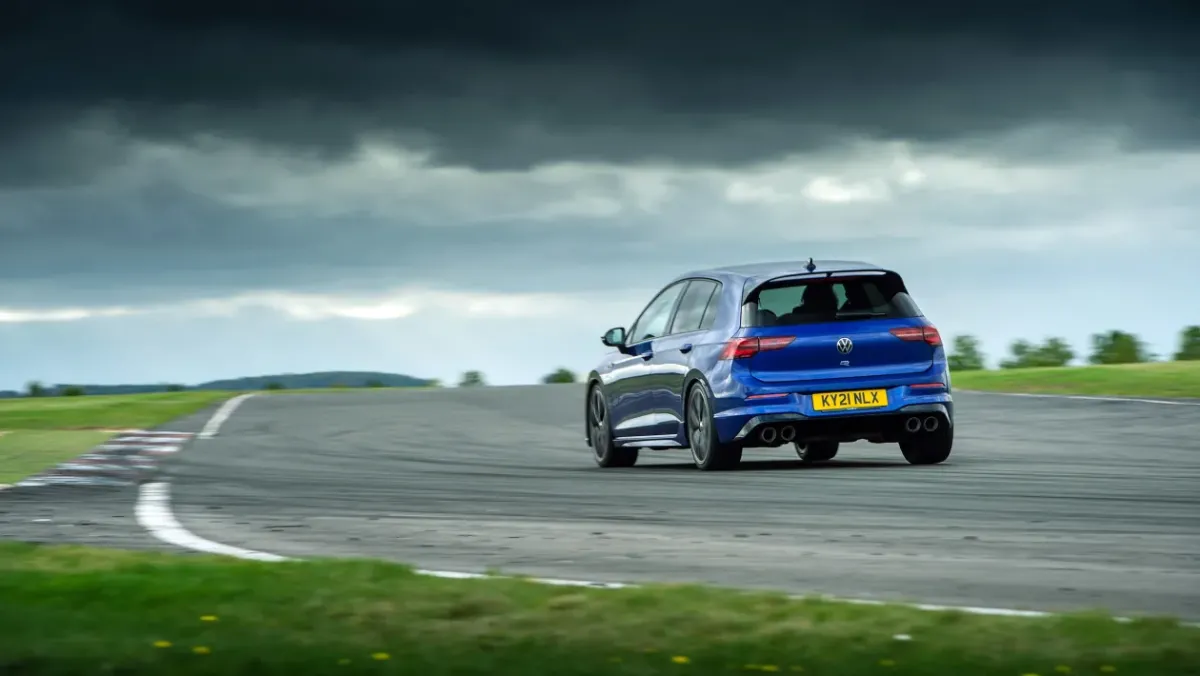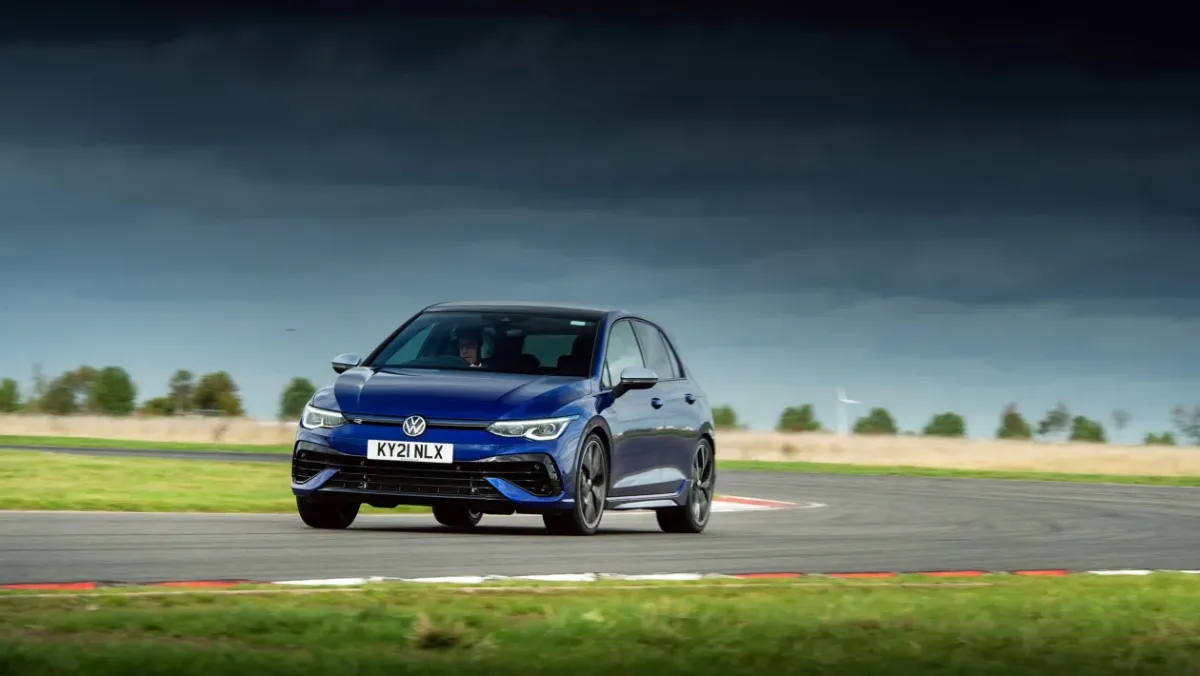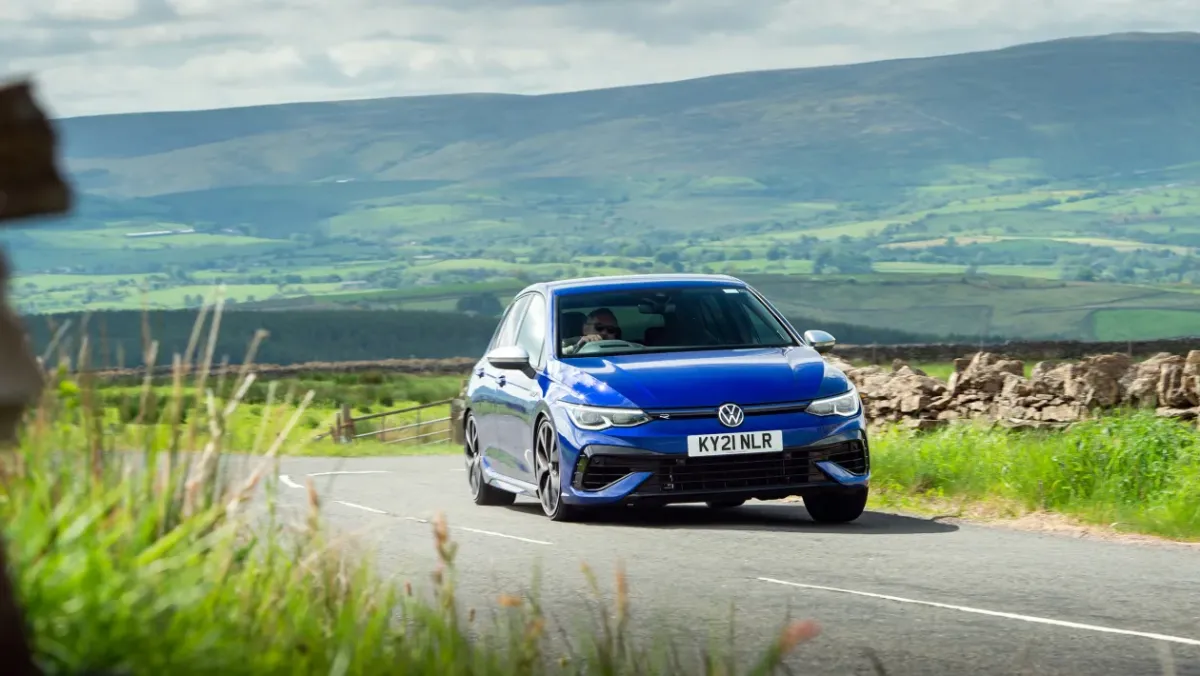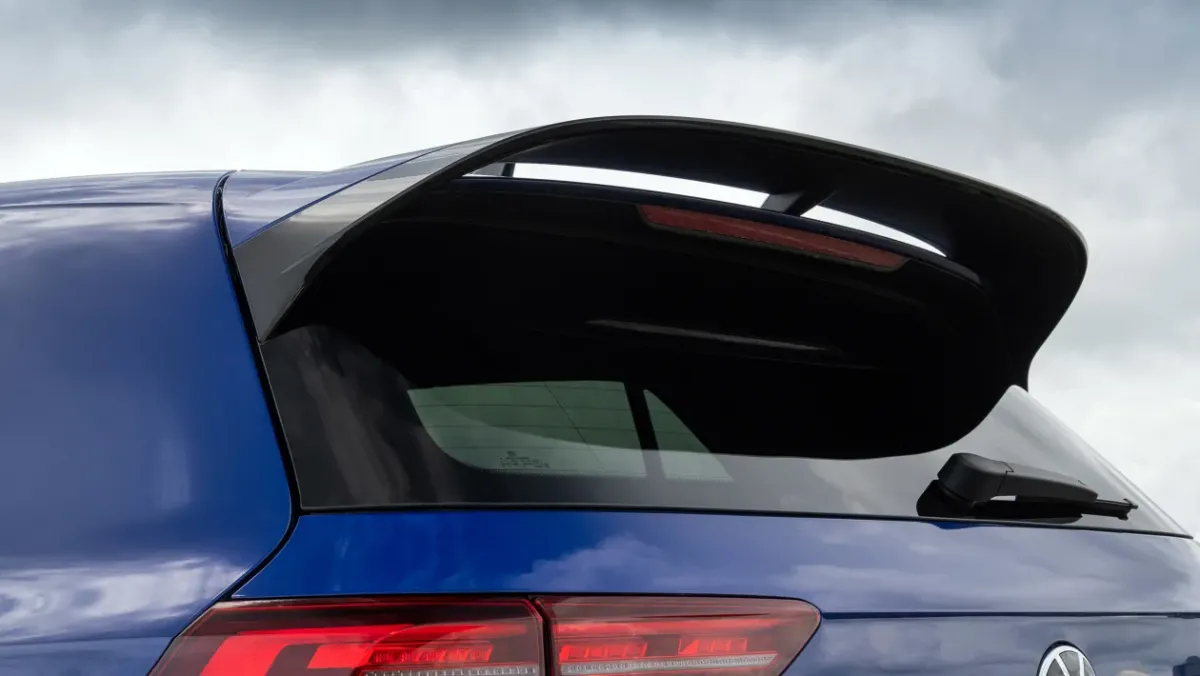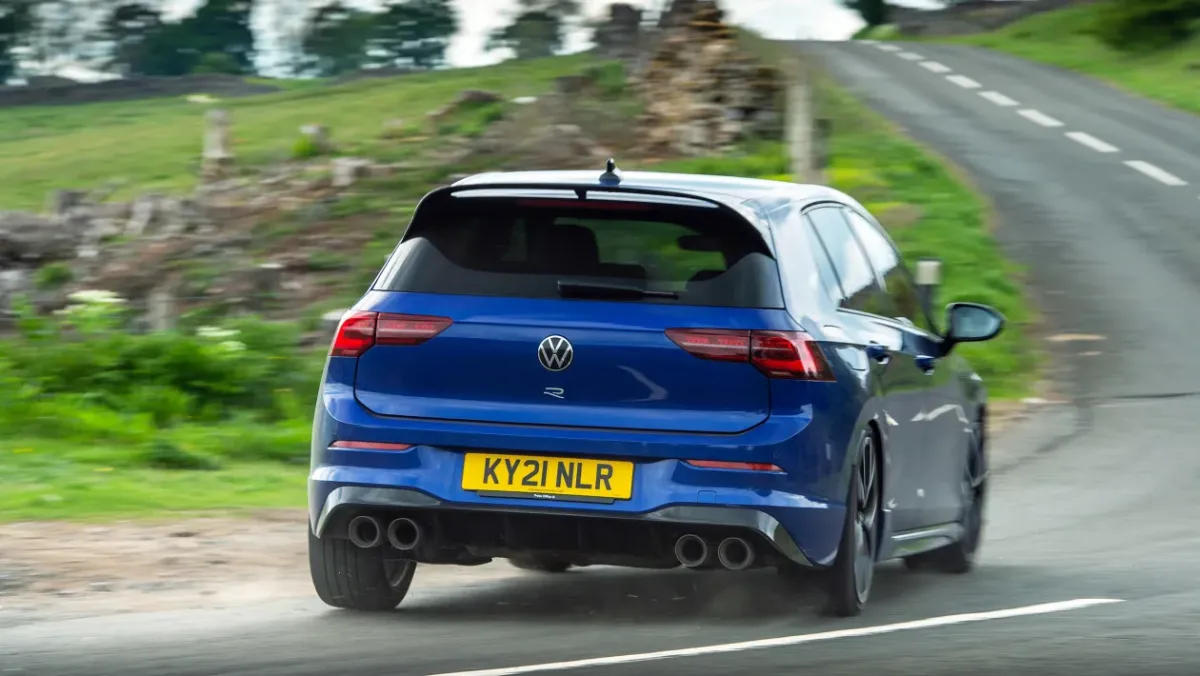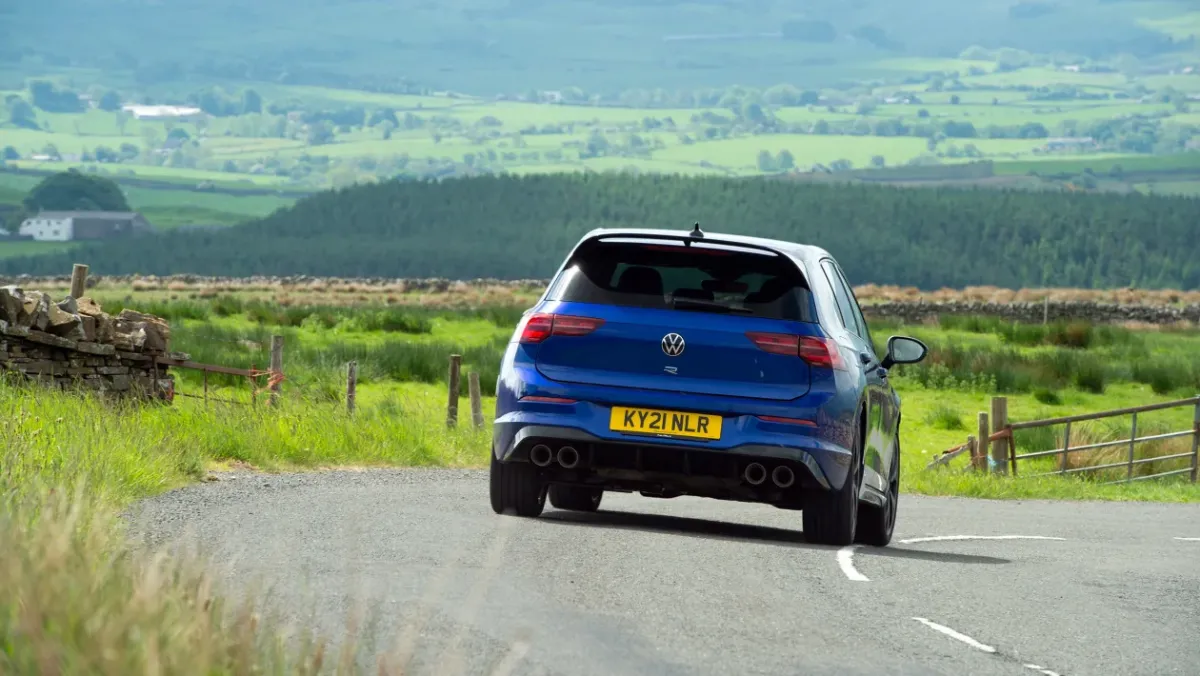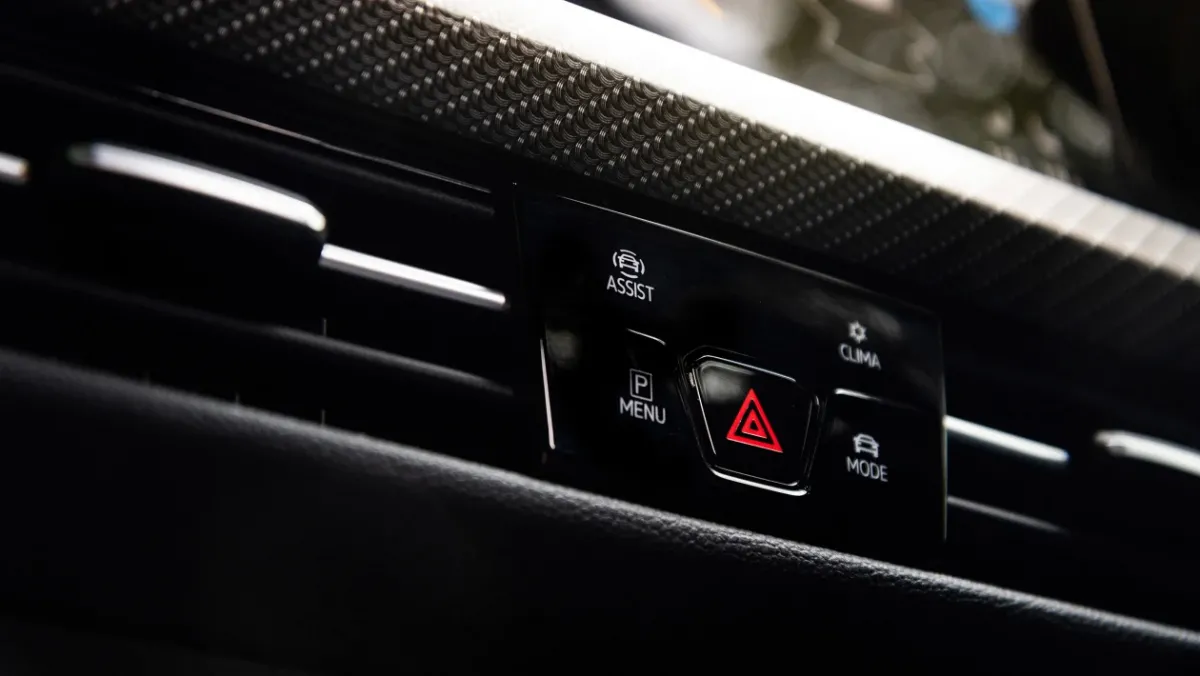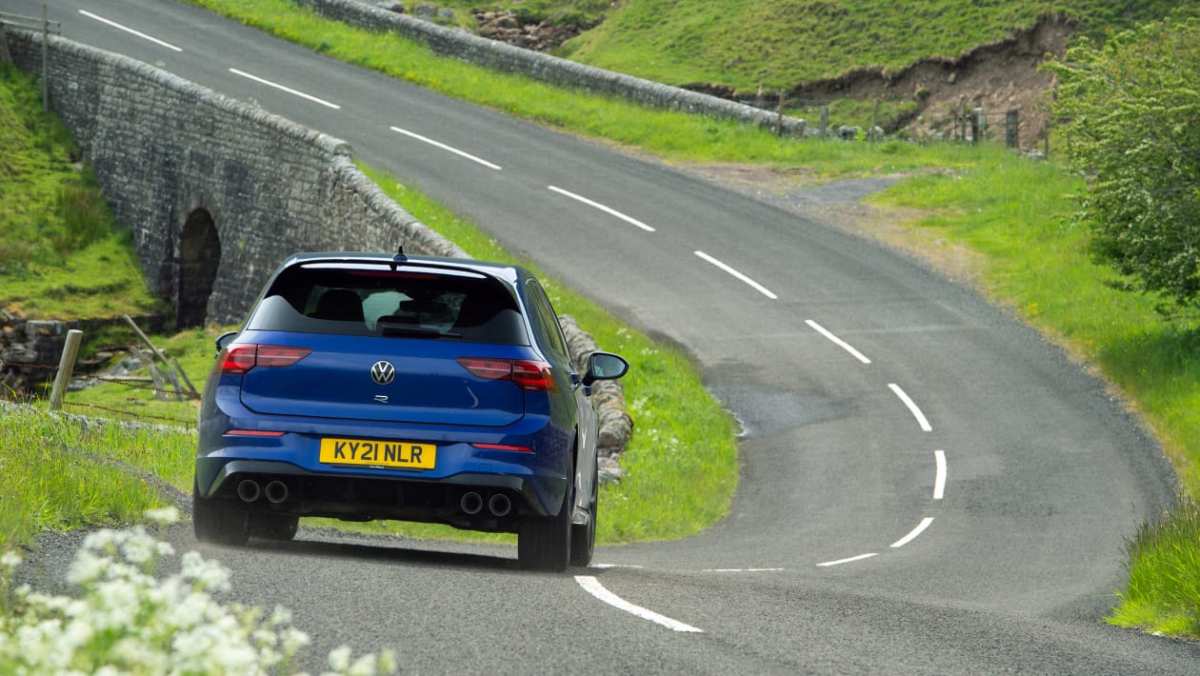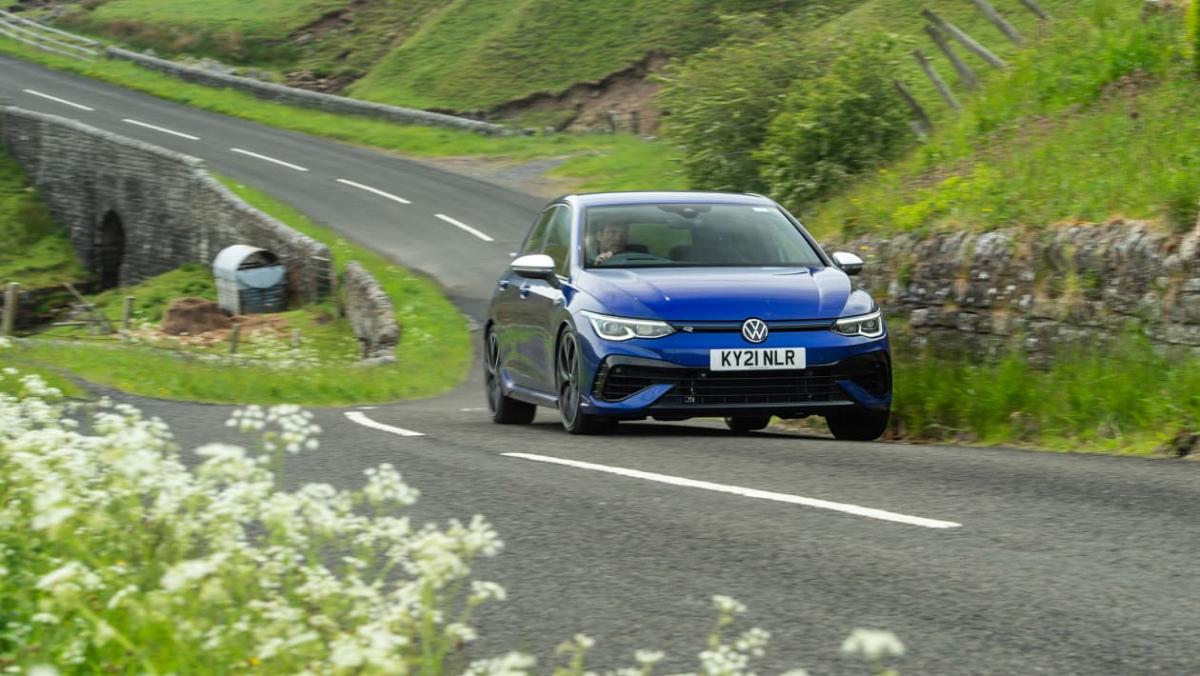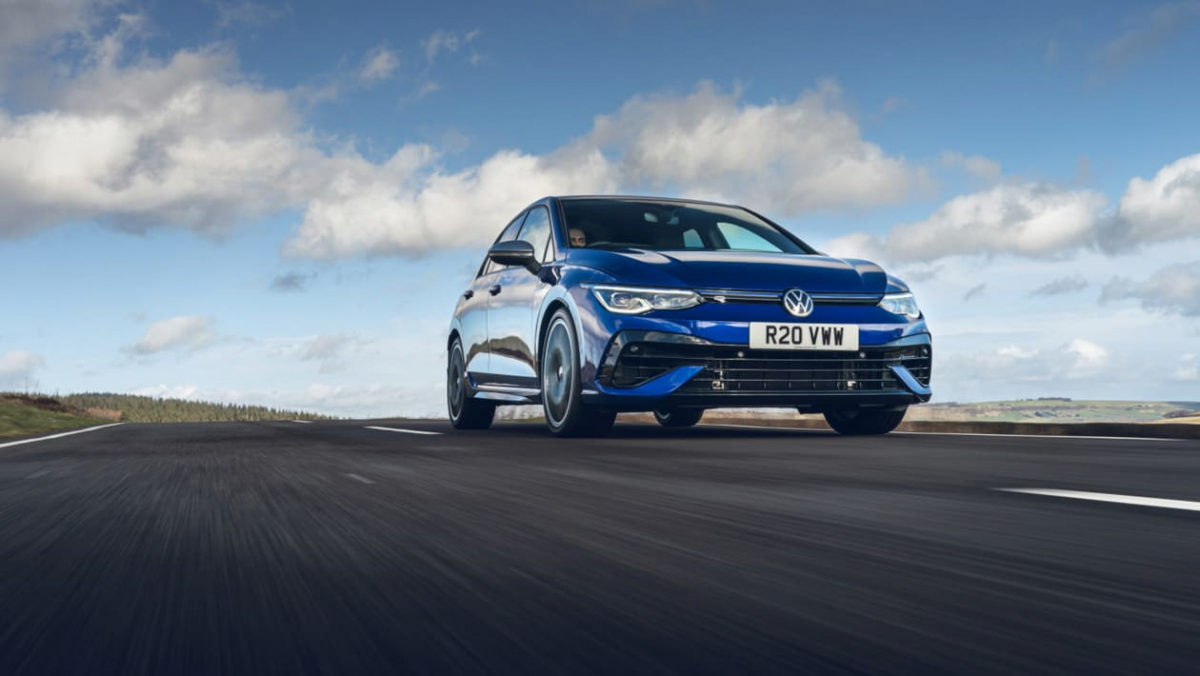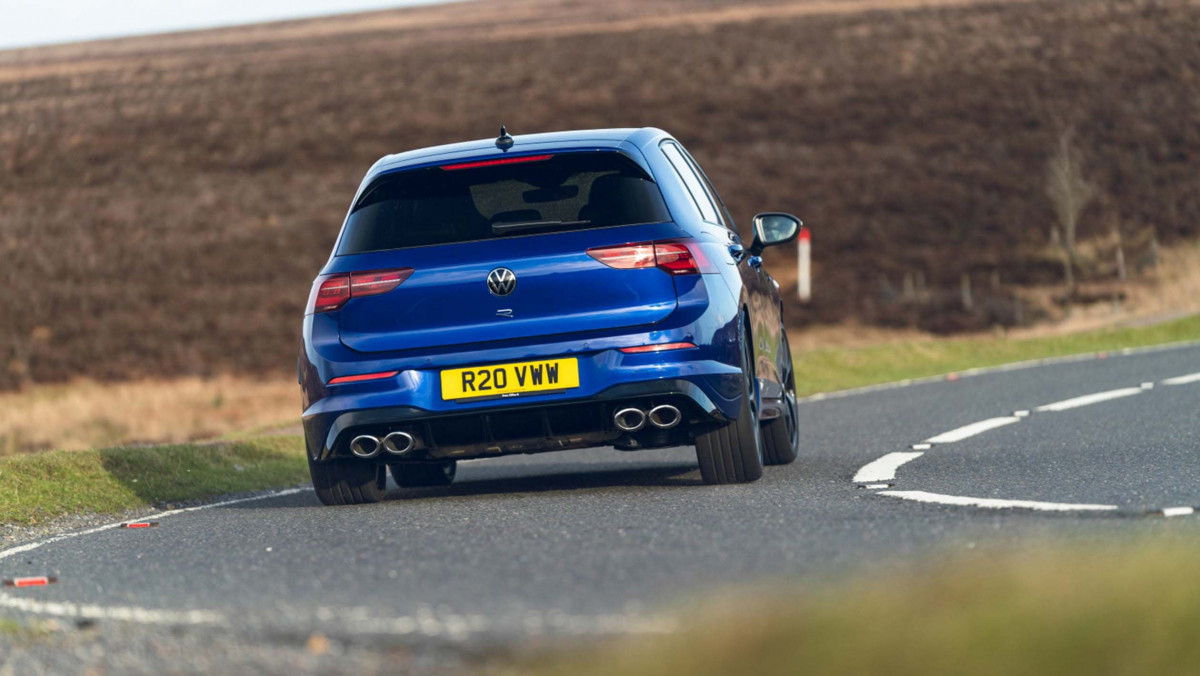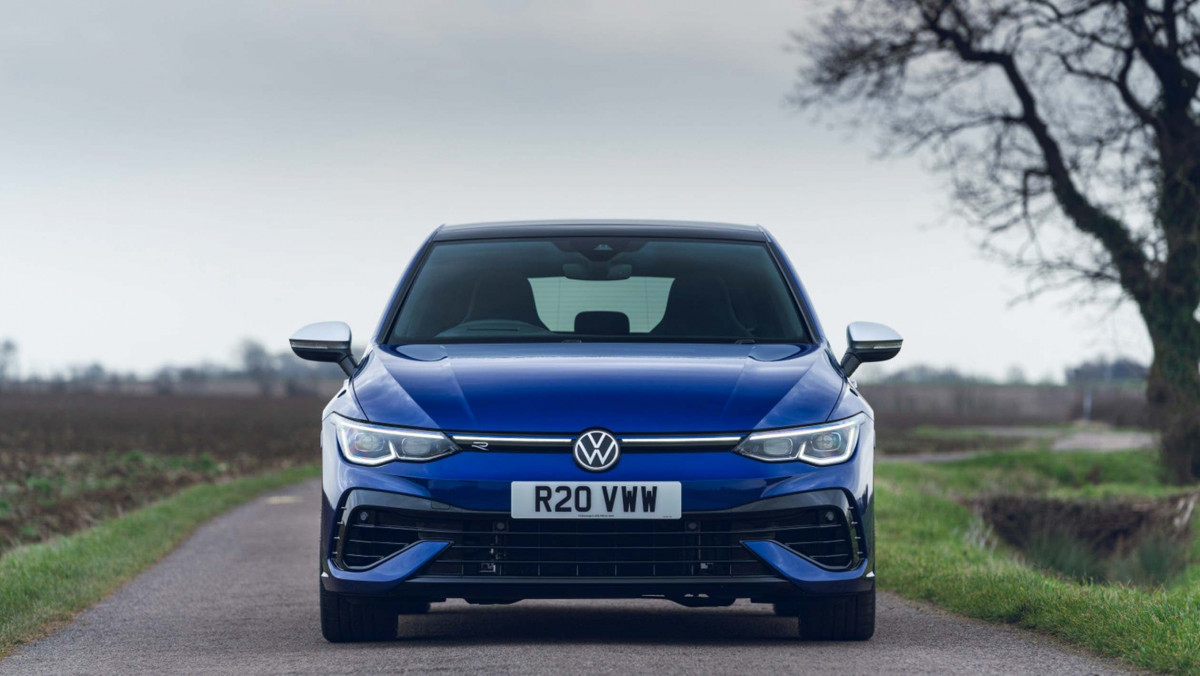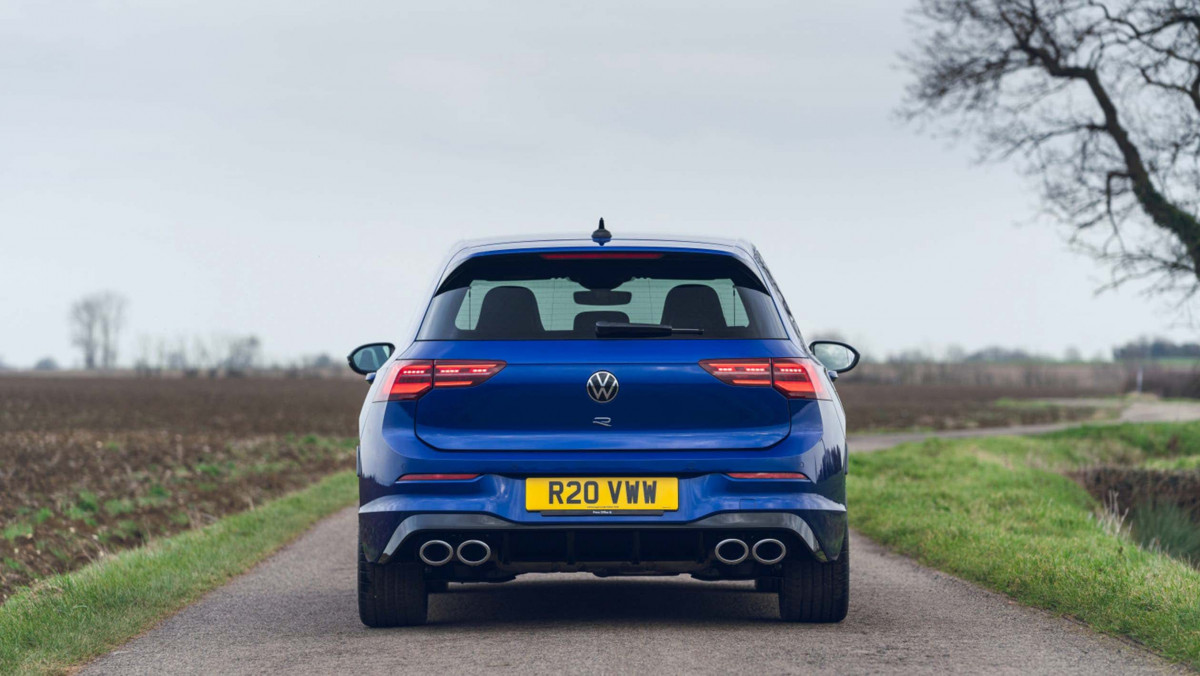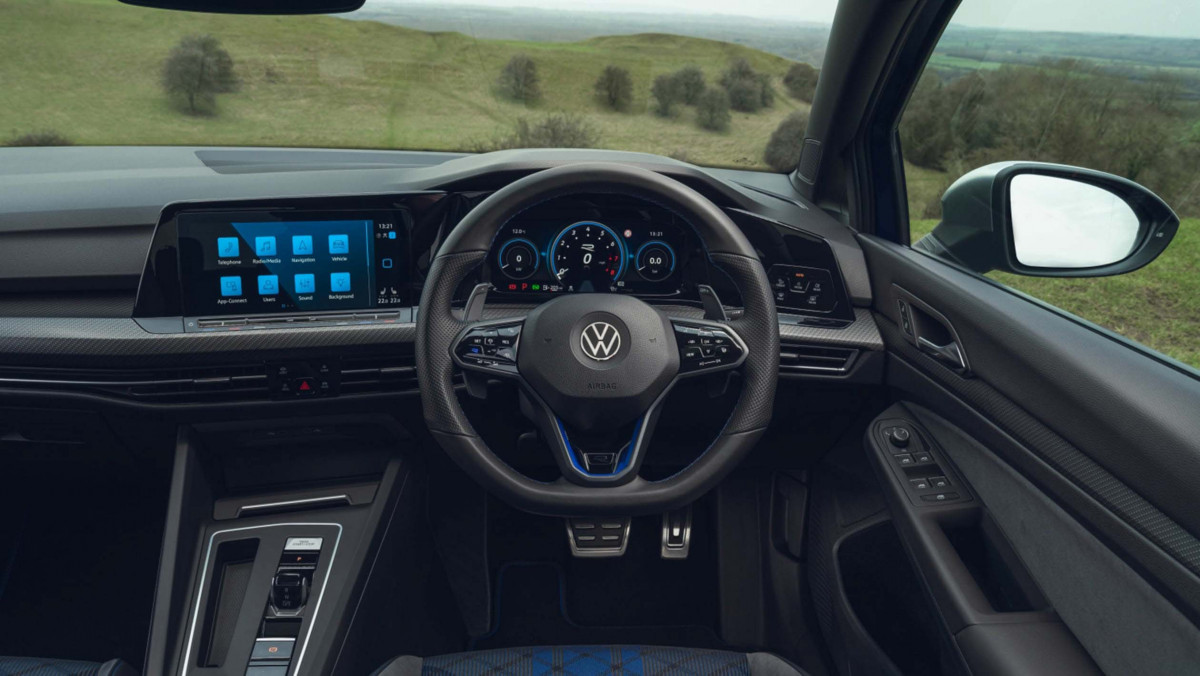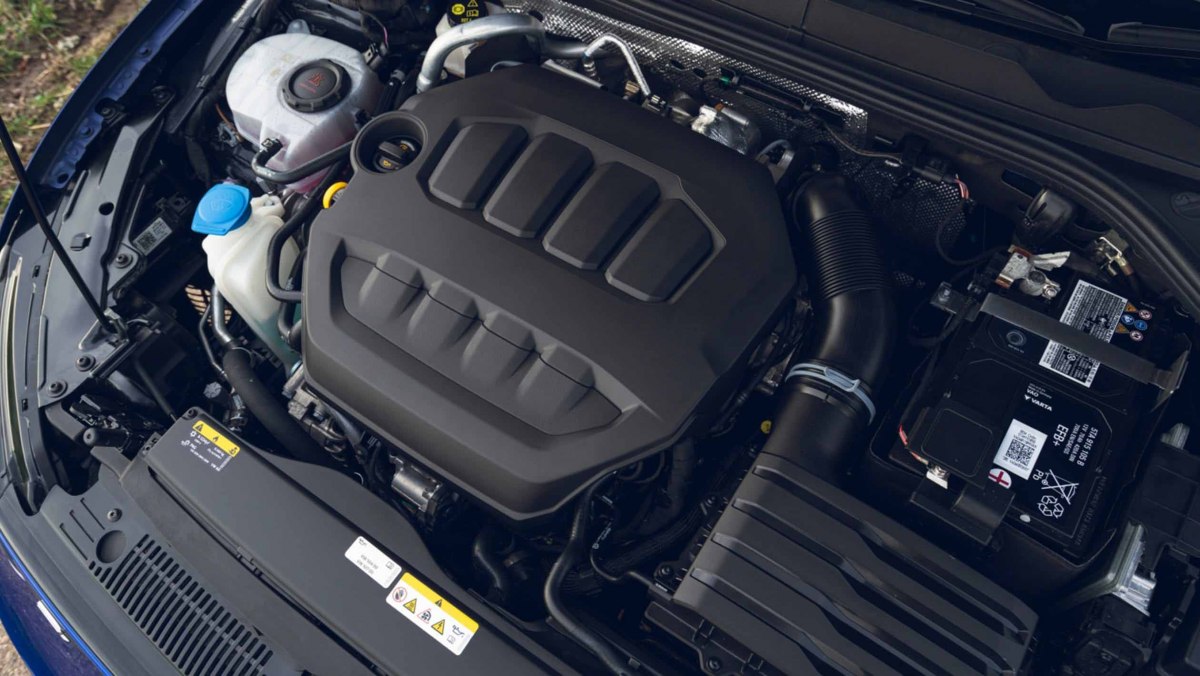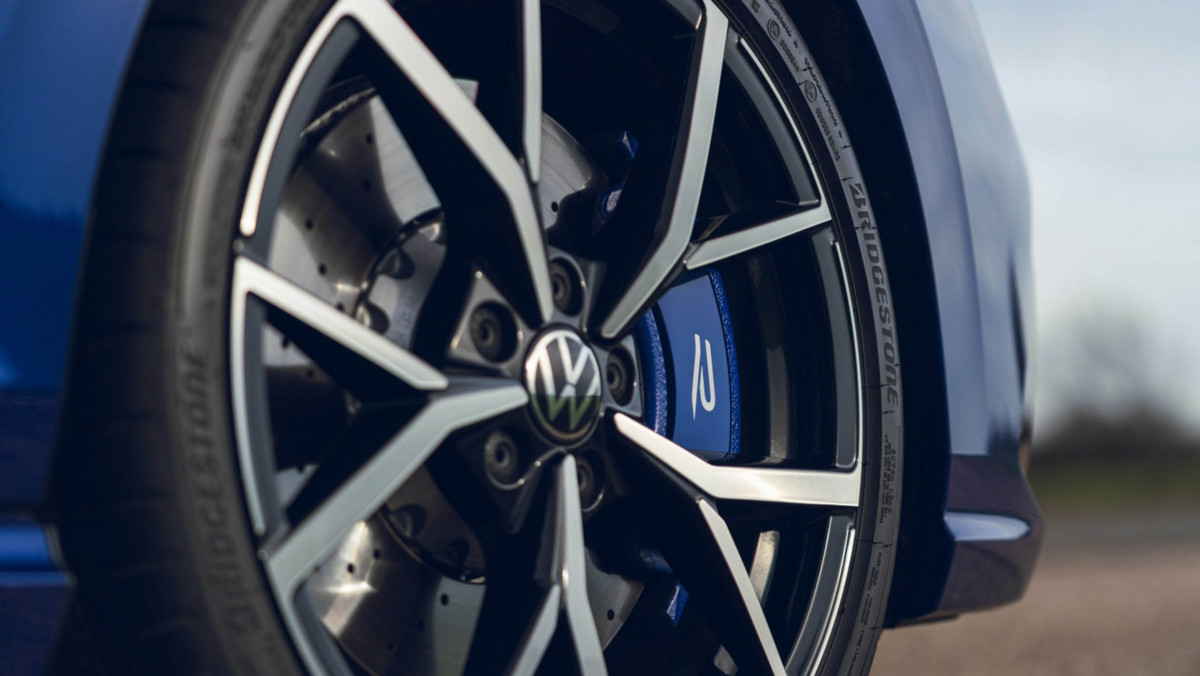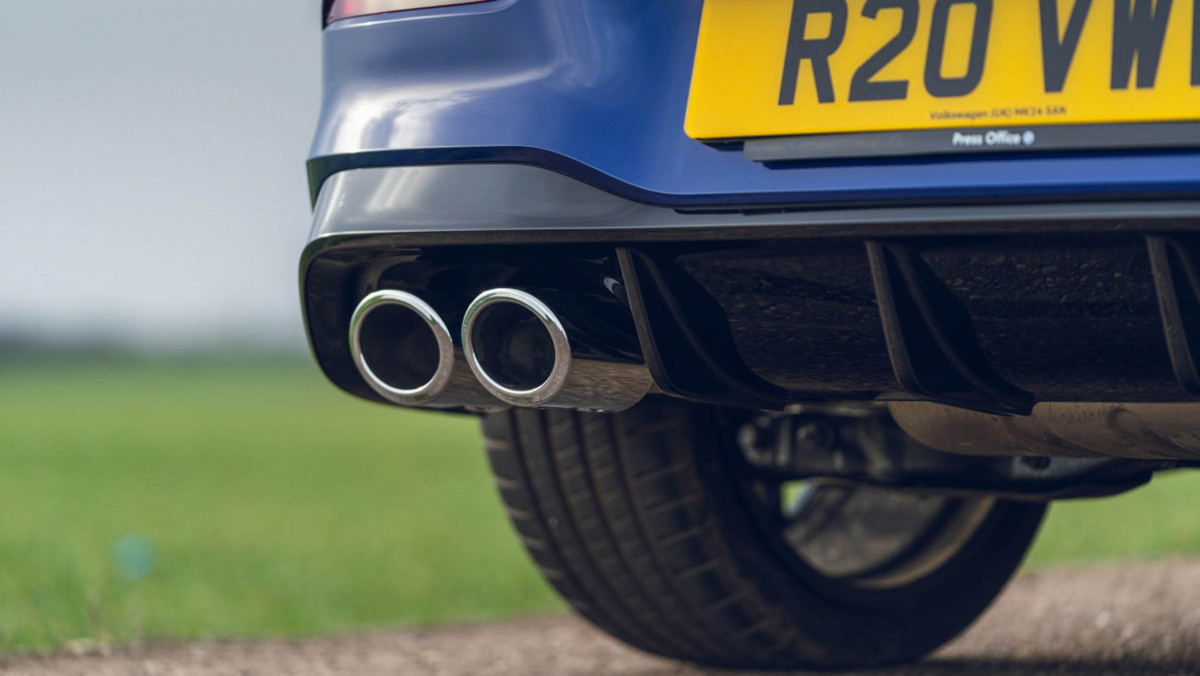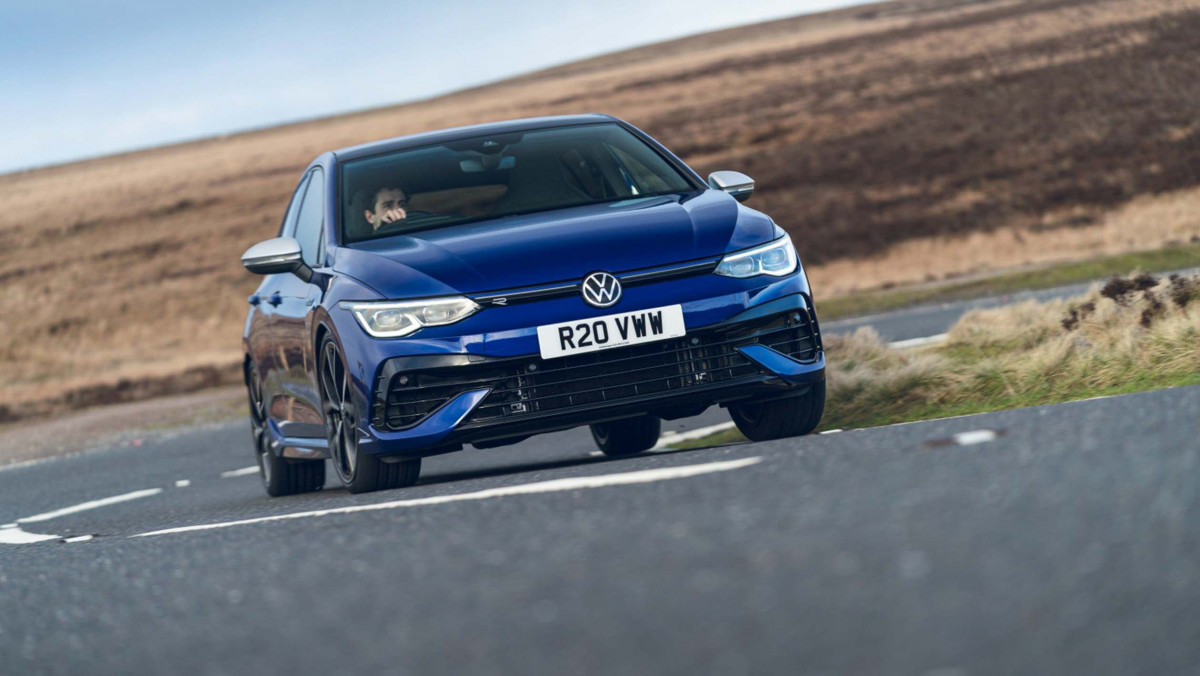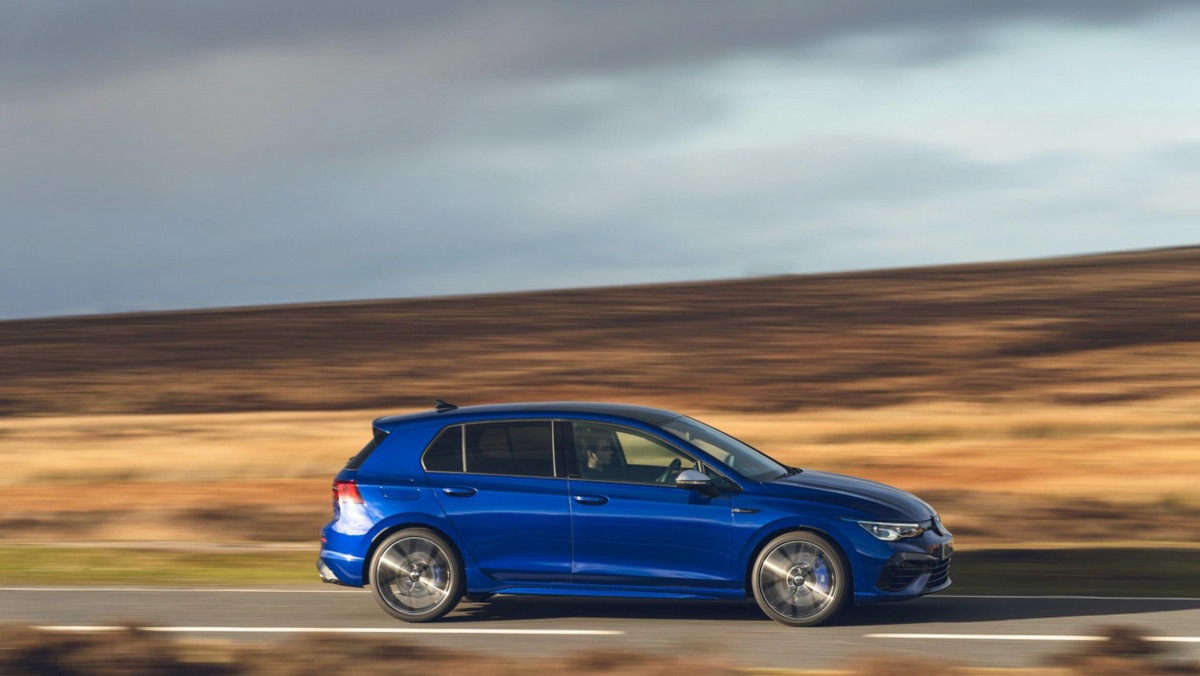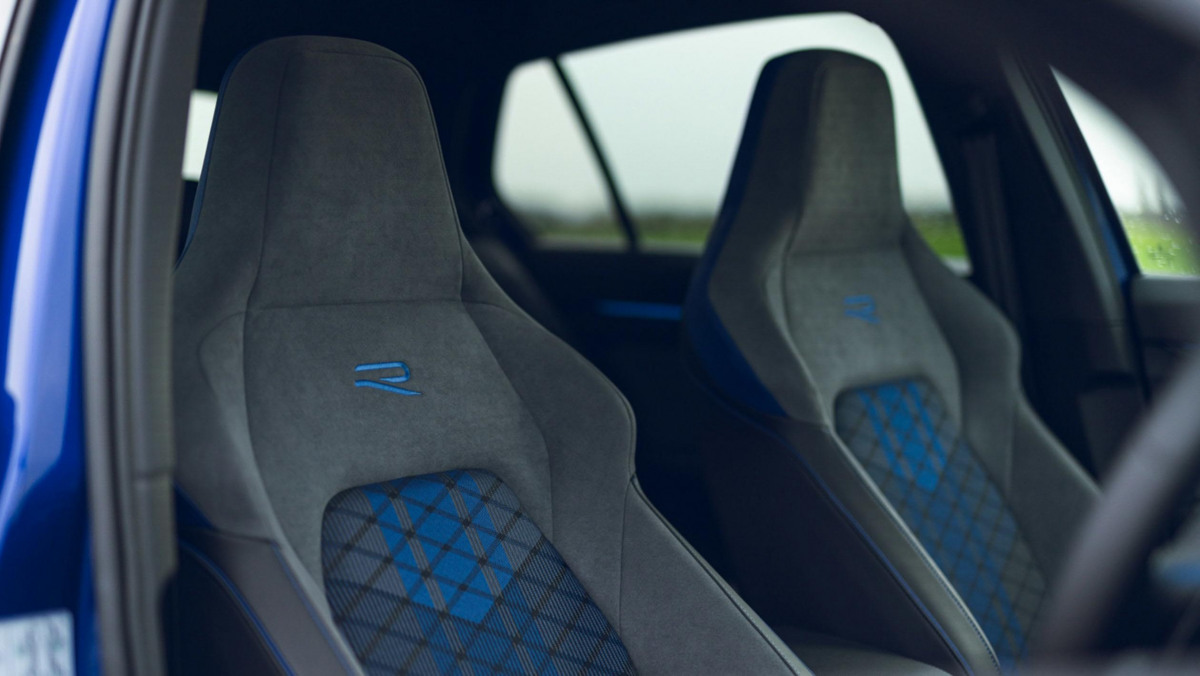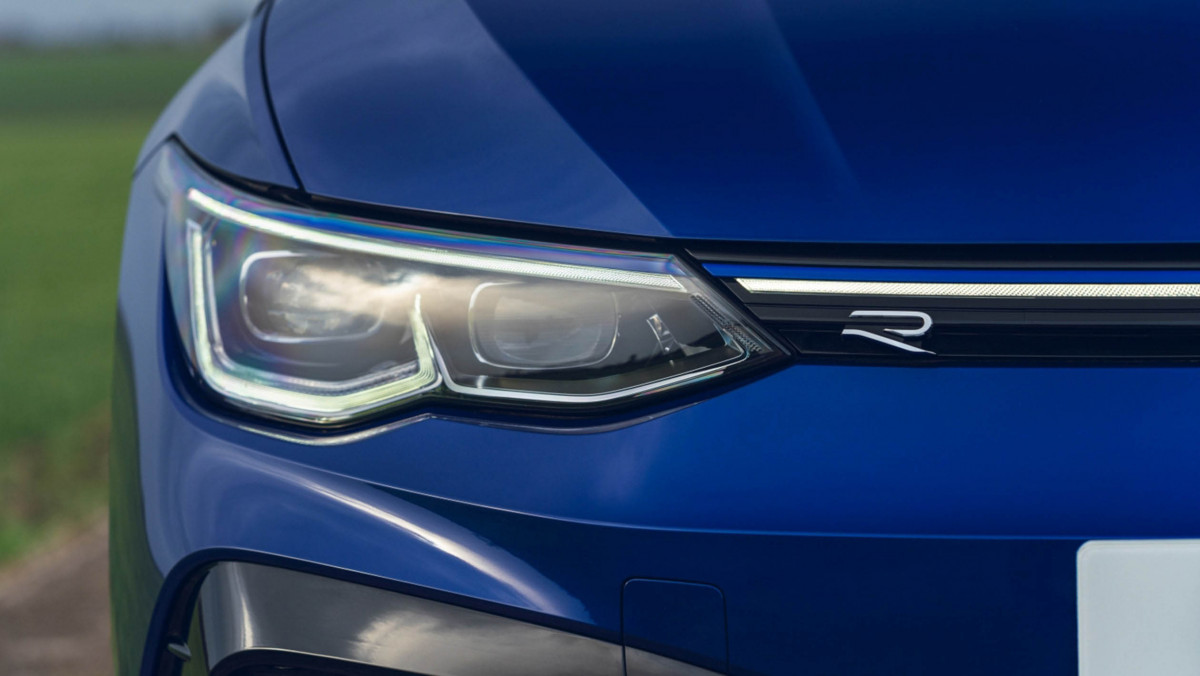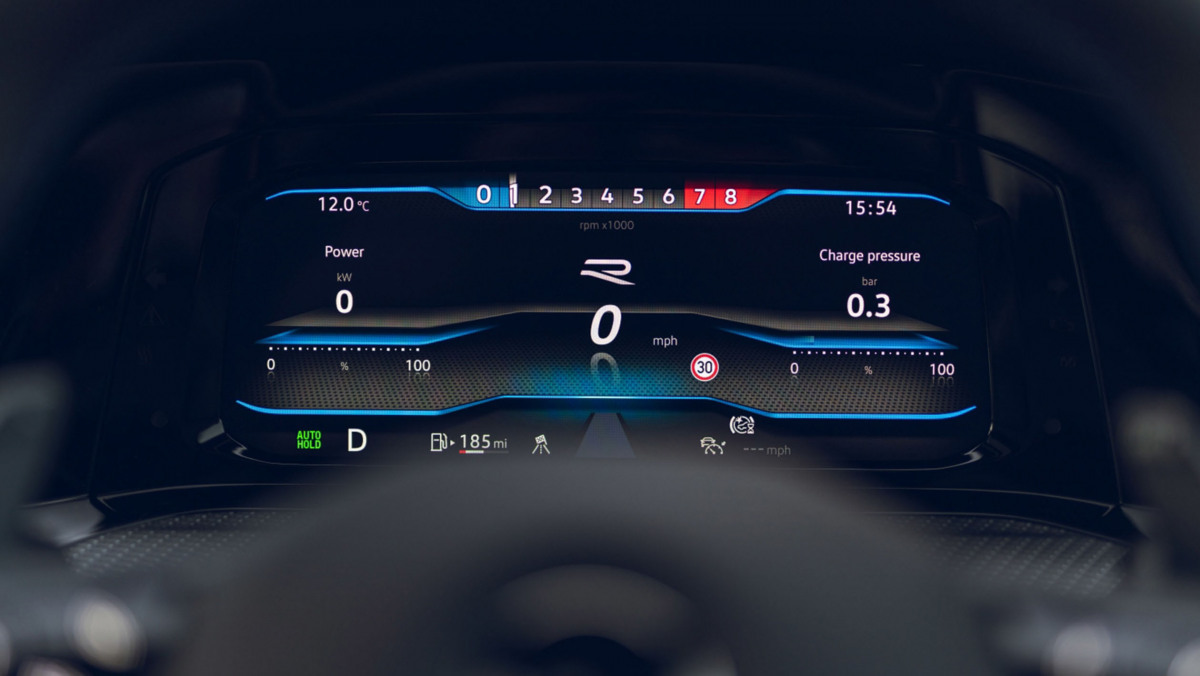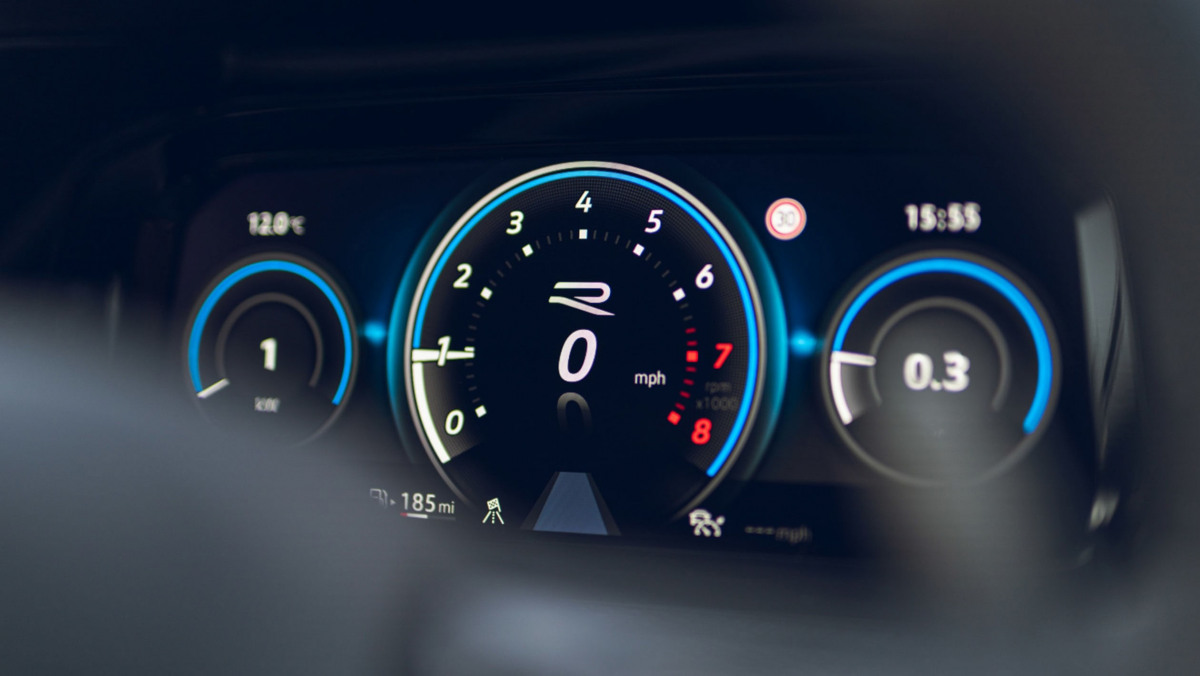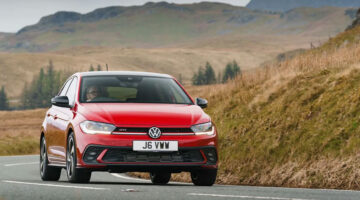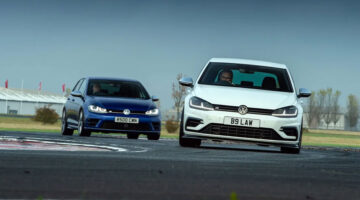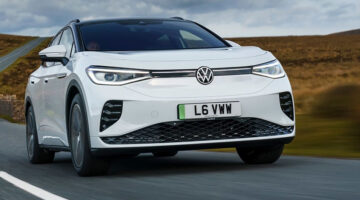The new Golf R is more refined and capable than ever, but driven hard exposes a genuinely wild side
| Pace, usability, power oversteer in a Golf! | |
| Hides its talents almost too well, expensive with options |
The Volkswagen Golf R has become the everyday hot hatch icon of our times. In a new car market where lease and PCP dominate, its mix of value for monthly expenditure and extreme real-world performance have made it an unstoppable force.
It’s fair to say that the pressure is then on for this new iteration, taking the latest Mk8 Golf as a base to reinvent the R without messing too much with the proven recipe. Can it maintain the qualities that made the old car such a success, or has the golden age of the Golf R been and gone?
Prices, specs and rivals:
There’s only one Golf R available in Mk8 form, with three-door and manual variants not options. When taken into consideration, the base $52,900 asking price makes the Golf R a solid few thousand pounds more expensive than its premium rivals from Audi (S3), Mercedes-AMG (A35) and BMW (M135i).
Unfortunately, despite its flagship status within the Golf range and a base price north of $52k, the latest R is shockingly underspecified when it comes to standard kit. Shell out for the Performance Pack at $2700 and you’ll still need to find an extra $1050 for the critical adaptive dampers. Want a decent stereo? That’s an extra $825, and while a rear camera sounds reasonable at $400, it should absolutely be standard for this price.
There are more expensive indulgences like the $4100 Akrapovič exhaust or $1320 panoramic roof, but the rather shocking $3450 for leather upholstery is a lot for what essentially comes as standard on almost all rivals. The crux of the long options list is that to reach the point where a Golf R feels well-specced you’ll be knocking on the door of $66k…
The R’s strongest competitor in its little grouping is the Mercedes-AMG A35, a car closely modelled on the VW; both offer digital cockpits, 300-or-so bhp and four-wheel drive. And while the A35 is fractionally more expensive at $54,050, it drives with more polish and composure.
Broaden your horizons into the wider hot hatch world and there are plenty of other choices, whether it’s the dynamism of the Toyota GR Yaris, the great all-rounder that is the Hyundai i30 N, the recently revised Renault Mégane RS or the mighty Honda Civic Type R. There’s a hot hatch for everyone, from the Fiesta ST to the Mercedes-AMG A45, with price, performance and driver appeal to suit.
Engine, gearbox and technical highlights
There is no manual gearbox available with the new R, just as there are no three-door Mk8 Golfs full stop, so the range has shrunk from four layout variants to just one. The powertrain is also familiar, with the 2.0-litre EA888 four-cylinder turbo now in its fourth generation, making it cleaner but also slightly more powerful, peaking at 316bhp and 310lb ft of torque.
The twin-clutch DSG transmission features seven gears, and its near instantaneous shifts contribute to effortless performance, even if the turbocharger and transmission feel like they need longer to wake up than they once did – something that could well be due to the gas particulate filter fitted to all Mk8 Golfs.
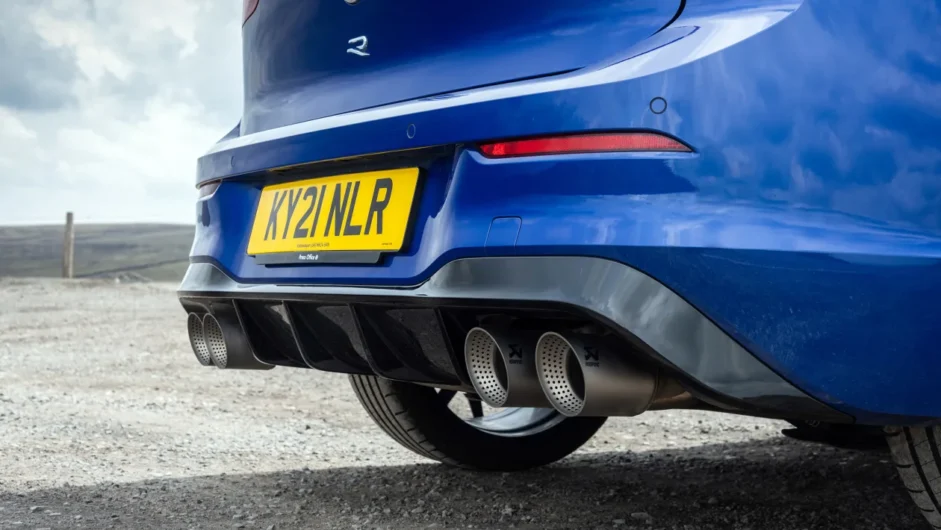
Like the Mk8 GTI, and particularly the new Clubsport, the R features a host of detail improvements to its tried and tested layout of McPherson front struts and a multi-link rear axle, with improved bearings and joints throughout and stiffer spring rates than the old car.
The standard dampers are passive, but VW’s adaptive units are a $1100 option (and a must-have in our view), while the Performance Pack not only includes the raised limiter but also a larger roof spoiler, 19-inch wheels and two extra driver modes – more of which in a bit. An Akrapovič titanium exhaust is a further option.
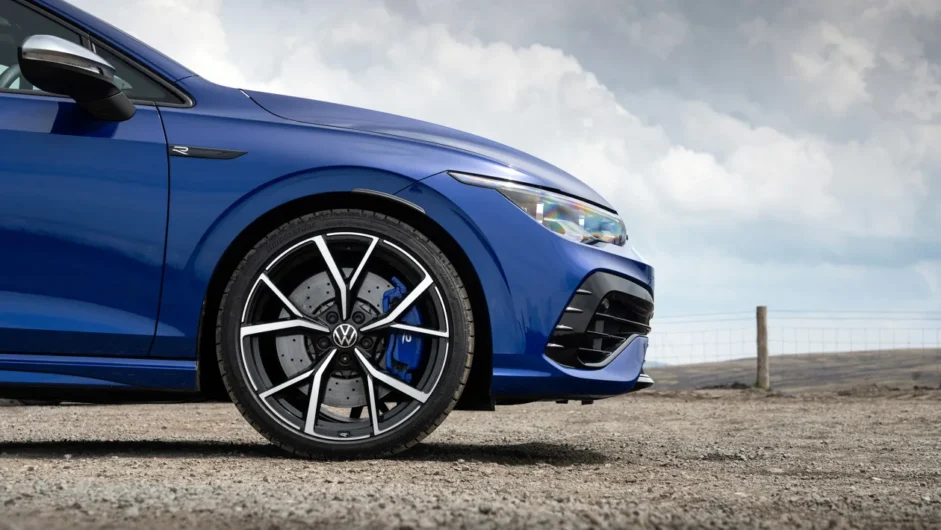
The standard wheel size is once again 18-inches, but there’s a new element to the drivetrain that delivers power to them in the form of a torque vectoring rear differential that can send up to 100 percent of drive to the outer rear wheel during cornering.
The R offers Comfort, Sport, Race and Individual driver modes, accessed via a button on the dash or on the steering wheel. If the Performance Pack is fitted there are two extra modes: ‘Special’, where all the car’s systems are configured for the Nürburgring Nordschleife, and ‘Drift’, with obvious consequences. The front brake discs are larger than the old seventh generation model at 357mm, and gripped by lighter calipers.
Performance and 0-100 time
In all rational sense the Golf R is a quick car, but it does feel somewhat blunted by its 1479kg kerb weight, which is nearly 100kg more than the larger, but admittedly front-wheel-drive Honda Civic Type R. With a heady combination of high-torque turbocharged engine, 4Motion all-wheel drive and a dual-clutch transmission, the Golf R will get to 100kph from rest in 4.7sec.
In-gear performance is impressive, but get on the throttle when in a high gear out of the powerband and it can feel like an age until the turbo’s full potency is delivered. This sluggish feeling is typical of lots of modern performance cars that have been tuned to stay out of the powerband as much as possible to keep L/100km, and therefore CO2, as low as possible.
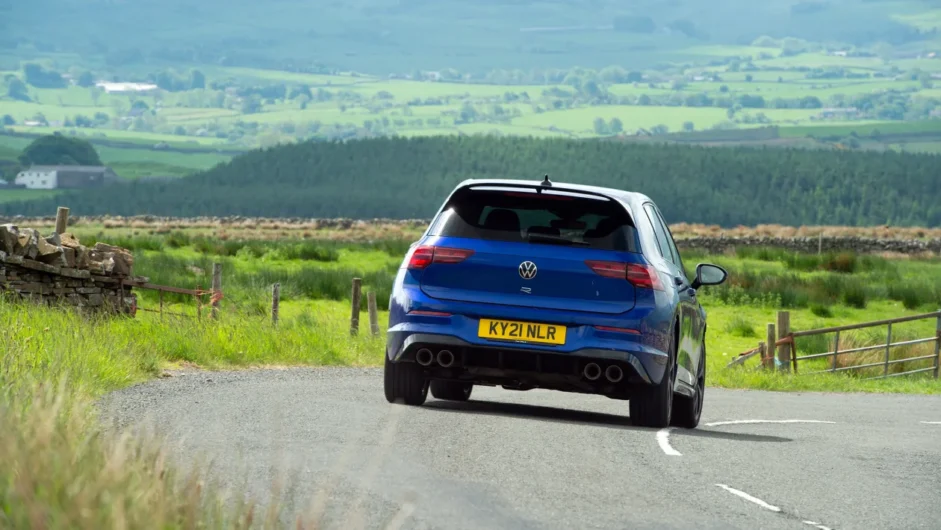
This can be remedied by selecting one of the Golf’s more dynamic driver modes which keeps the engine on the boil more willingly. The ability to decouple the transmission mode from the engine mode is also a big boon, and if you do decide to take over there are a fantastic new set of paddles behind the steering wheel to give you control. It’s one of the few, but much appreciated, improvements the Mk8 has introduced.
Ride and handling
The new Golf R is a car with an awful lot of software commanding your attention from the moment you slide into its bucket seat (cloth, with blue R logo and blue-black check pattern). It is possible to simply press the ‘start’ button and drive, as long as you don’t mind the haphazard and unsettling intervention of the Lane Assist function, which has to be switched off every single time the ignition is turned on.
To adjust the ESP setting you’ll need to delve into the massive central display, look for ‘brakes’ within the assist screen and confirm your choice. It’s an excessively complicated process, and that’s before you’ve considered driver modes. If you really want to set the car up for enthusiast driving, it’ll take pressing buttons for at least 30 seconds after ignition to get there. The Mk8’s fully digital cockpit, central infotainment screen and haptic temperature control screens are also a taste we’ve yet to acquire…
Anyway, with Lane Assist disabled and Comfort driving mode selected, the Golf R feels more or less like a TSI-engined Golf R-Line. It is completely undemanding: quiet, refined, well-riding even on the optional 19-inch wheels, coasting at times to save fuel, and perfectly set up for local trips or long motorway drives.
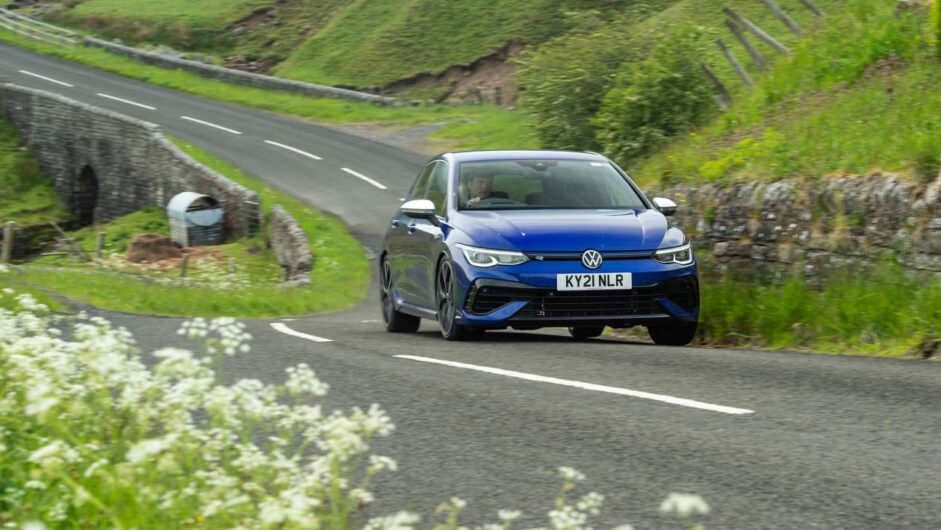
Objectively these are all good things, qualities that will make the R an effortless companion, especially for those who are only interested in owning the best, most expensive Golf, but aren’t really interested in hot hatchbacks per se. The previous model was always good at covering off this market, something that’s unchanged in the new R.
The problem occurs if you want your hot Golf to be exciting when the road gets interesting. For all its glossy persona and capability, you can drive for kilometers and kilometers and wonder what all the fuss is about.
That is until you dare delve back into the driver modes. Get busy with the different elements in Individual mode and the Golf R’s more aggressive side starts to reveal itself. The powertrain, optional adaptive dampers and steering ratio all immediately wake up, washing off some of the polish that all these elements portray when just ambling about, but unlike its predecessor what’s revealed underneath doesn’t exactly feel up to scratch.
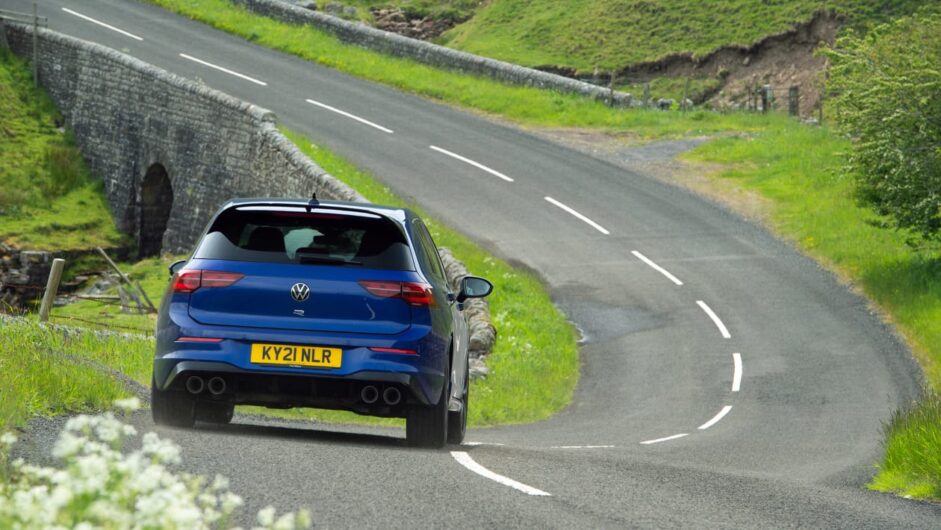
Despite added weight to the steering, the Golf R feels looser and less precise around the straight ahead than it really ought to. Start leaning on the chassis and the front end is immediately put under pressure, the dampers’ struggle to maintain complete control of the front wheels fed back to you via kickback through the steering wheel. Introduce some challenging cambers or bumps and it doesn’t take much to find the bump-stops.
This is all the more disappointing when you learn that, like the GTI Clubsport, the R’s front end actually has some pretty serious geometry, with an aggressive amount of negative camber, while the subframe is reinforced and the progressive steering rack is bespoke.
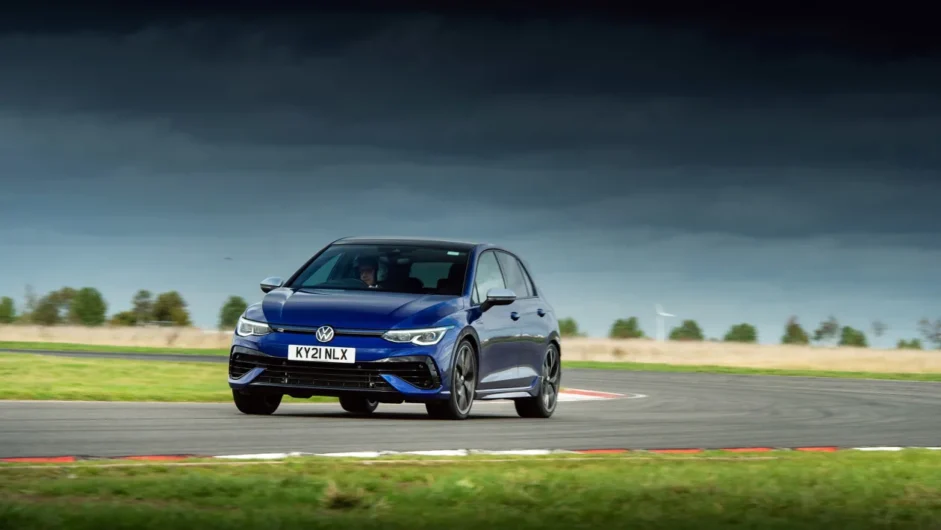
Yet the front end’s outright grip and control just isn’t there. Brake very hard into a tight corner and you can get the tail swinging to help turn in, and once in the corner it’s possible to get on the power very, very early – sometimes this simply fires you out of the corner in a satisfying manner. But in some circumstances it results in dramatic power oversteer, thanks to the torque vectoring rear differential, and try to maintain yaw and it almost feels like the tyres are being dragged in underneath themselves, sometimes manifesting in a sort of lateral hop like you’re in an AMG from the early noughties.
Ironically, a modern A45 S AMG will do the same oversteer motion, and very occasionally the GR Yaris, but there’s something about the way the R relinquishes grip and then drives forward with all four wheels scrabbling away that feels a little less resolved.
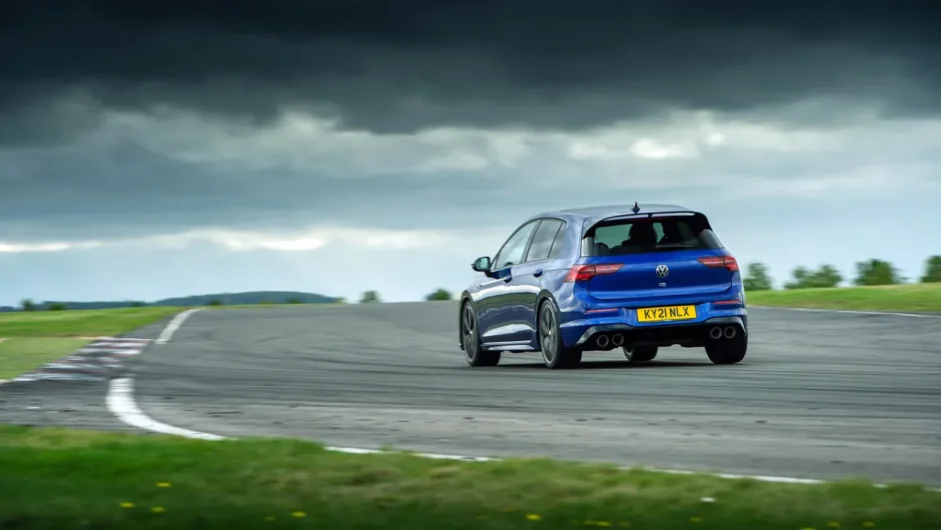
The engine also isn’t without fault. At lower revs it feels constrained by the car’s weight, but once over 4500rpm the mass is less of an issue and the R does pick up speed. As mentioned, the larger paddles behind the wheel are a big improvement as well, although they’re still a bit of a stretch to reach.
But despite some new tricks, the Golf R’s overall driving experience feels undernourished in a way the old car’s didn’t. The basics are there, but the dynamic capability that resided below the polish is gone, replaced with something that’s more ham-fisted and broadly less capable.
To many Golf R buyers, this last ten per cent won’t matter. But to us, for what was always a very desirable car that had the dynamic chops to back it up, it’s returned to the Mk6 syndrome of not actually being that great to drive, which makes the Mk8’s price tag even harder to accept.
L/100km and running costs
There’s plenty of emphasis on fuel saving in the new Golf R with its particulate filters, eco modes and dual-clutch ’box, yet like all these New-Age high-performance fours, hard use will see L/100km figures drop way down from those claimed. VW quotes an official rating of 7.8L/100km, but this will easily drop to the mid-20s when pushing hard.
In contrast, a gentle motorway cruise will see the R comfortably crack 7L/100km, the variation in fuel usage a clear signal of how much development and technology has been integrated into the venerable EA888.
Your biggest friend when it comes to running costs is the Golf R’s rock-solid residuals, often making the R cheaper to buy on a lease or PCP finance option than far more affordable rivals of a similar demeanor.
Interior and tech
You might have already gathered that we’re not the greatest fans of the new Golf’s digital interfaces. This is not an anti-touchscreen thing – it’s just a bad system, plain and simple.
First there’s the interface itself. The initial menu structure is fine, but specific functions are buried under multiple menus that all largely look and feel the same. The process of completing a task via a digital interface like this should be no more complicated than answering a simple question presented on-screen, yet the VW’s infuriating choice to both ask too many questions, and conceal the answers, is the irritating component.
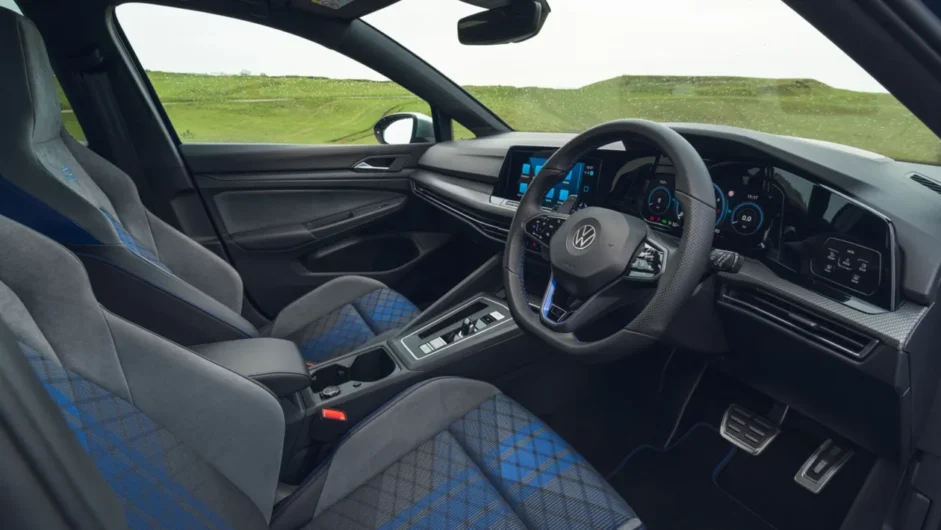
Want to lower the air conditioning temperature in a hurry? That will be a press of the climate menu. You’re then confronted with some very specific questions about what you want the climate control to do, none of which is what you’re after. Noticing a ‘classic functions’ tab at the top of the screen, you press it. A lateral fan control then appears, so you stab the fan ‘down’ control multiple times thinking it’ll switch off once it’s at the lowest setting, but it doesn’t. Only then, when you’re frustrated, do you see an unassuming round button at the top left of the screen that’s the same colour as all the other controls that will switch the system off. It is infuriating.
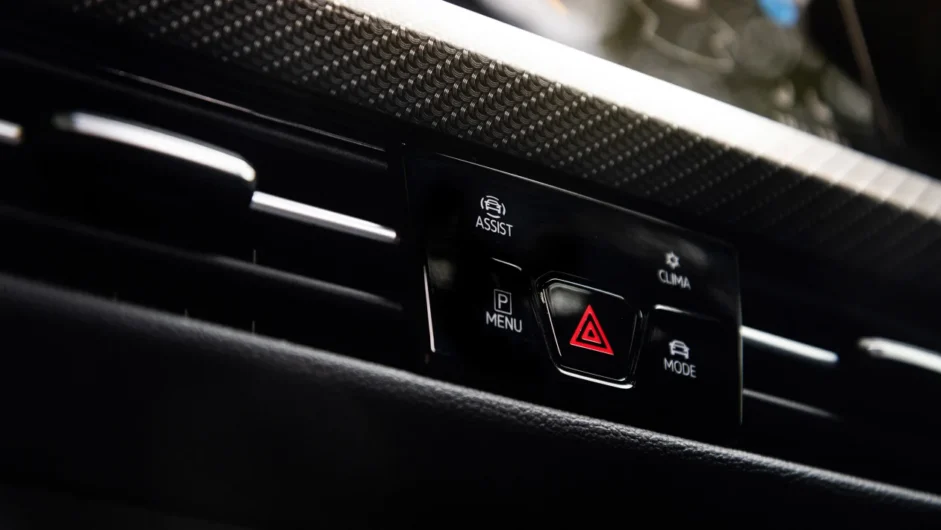
Add to this that you’re probably trying to prod these small points on a screen while being bumped around and trying not to crash into the car in front of you. Oh, and you can’t rest your hand on the base of the screen either, as that’s where the volume control is located. Add to this a laggy response time from the system itself and, unless you’re the Dalai Lama, by now you’ll want to throw a fist through the screen, but know that 95 per cent of the car’s functionality will disappear alongside those eight inches of so-called digital intelligence if you do.
As for the rest of the cabin, well, the seats are good, as is visibility and interior space, but alongside the mass digital interface and pared-back design is a notable drop in material quality. Like so many other parts of the Mk8, there’s been an obvious fall off not just in execution, but also thought, as if VW put all its money and effort elsewhere.
Design
The Golf’s evolutionary path has continued with more subtlety outside than in thankfully, with a design that’s clearly Golf but perhaps a little less resolved than before. The two-box silhouette that almost all rivals have since come to emulate remains, but both the surfacing and detailing have become a lot more complicated.
Up front, the Golf R’s look is at least more distinctive than that of earlier Rs, with manta ray-like upswept fins on the lower bumper breaking the usually clean openings. The thin LED headlights are more successful, but are joined rather clumsily by a broken light strip that illuminates alongside the headlights. A near clamshell bonnet is usually a lovely detail, but it can give the impression of a big forehead in automotive design terms when paired to such a tall glasshouse.
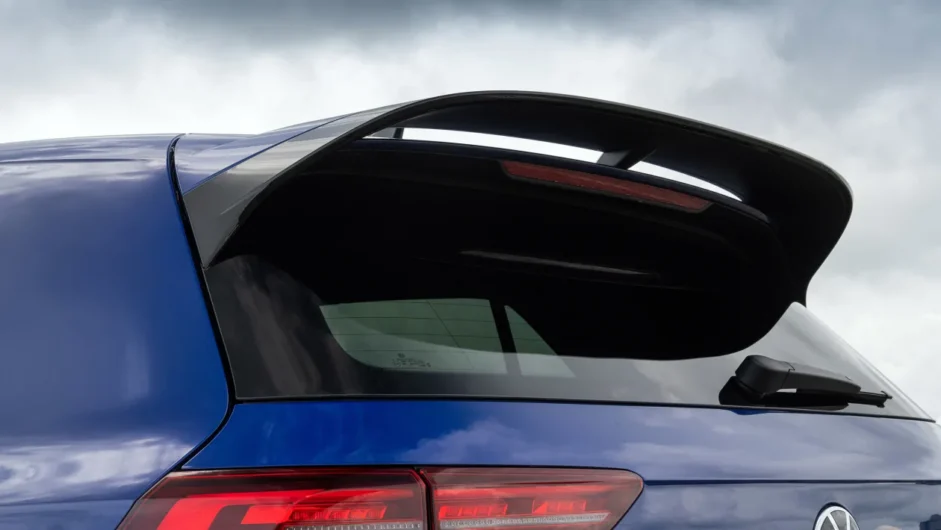
Non-Performance Pack cars on 18-inch wheels are very unassuming, but spec one up and things can get a little too aggressive, with the larger stacked rear wing of the PP looking unbalanced. Go for the larger Akrapovič exhaust and things get even more aggressive. Curiously, VW has chosen to offer the R in just three colours – trademark Lapiz Blue, plus a simple black or white – but the wheel designs are generally well suited regardless of size. Unfortunately, it’s diamond-cut or black only for wheel finishes, and true Golf nerds will also lament the death of the Pretoria alloys.
This article originally appeared at evo.co.uk
Copyright © evo UK, Dennis Publishing

